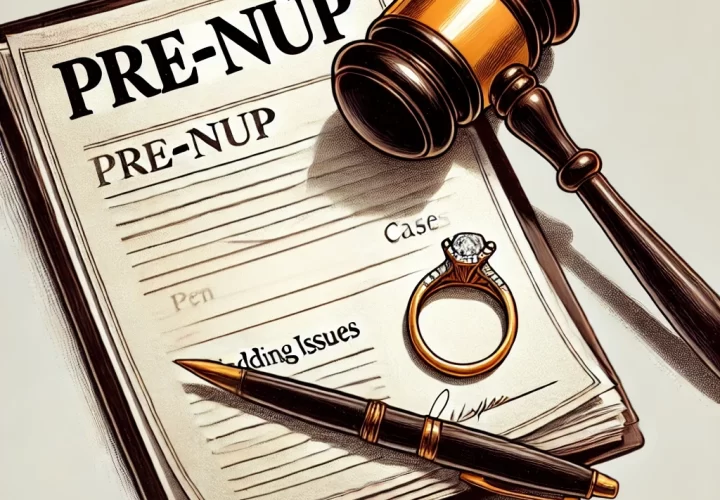If someone dies owning assets in his or her name alone (“probatable assets”), there must be a probate court proceeding to determine who is to receive the assets. In other words, the Will is given effect through the probate court proceedings.
Probate means “prove”. One must prove to the probate court that the Will is valid, that the maker was competent and not forced to make the Will, that the heirs and representatives are proper, that all creditors have been paid and that all persons are getting their just due. Only after the proofs are made may an heir receive his or her inheritance.
One type of probate procedure is called the SUMMARY ADMINISTRATION proceeding. It is available for use only when the probatable assets are worth less than $75,000.00.
For Summary Administration proceedings the following must be done:
STEP ONE: Give your attorney the following information and documents:
1. Original (certified) copy of death certificate.
2. Original copy of Will.
3. Names and addresses of all persons named in the Will.
a) If any such person is under age 18, state so and give names and addresses of such person’s parents or guardian.
4. Names and addresses (and whether person is a minor or not) of the following persons not named in the Will.
a) Decedent’s parents
b) Decedent’s spouse
c) Decedent’s children
d) Children of deceased children
e) If none of the above exists, then
i) Brothers and sisters of decedent
ii) Children of deceased brothers and sisters
5. A legal description and street address of any real estate owned solely by the decedent (give copy of deed and/or title insurance policy).
6. Detailed description of bank accounts in decedent’s name alone including:
a) Name of bank and branch address
b) Account number and type (i.e. CD, money market, checking)
c) Balance in accounts
7. A detailed description of securities (stocks, bonds, mutual funds and partnerships) owned by decedent alone, including:
a) Name of company (and addresses if mutual funds or partnership)
b) Certificate Number
c) Number of shares
d) Value
8. Proof that all doctors, hospital and the funeral/cemetery bills were paid. Such proofs must be on the stationery or forms of the doctors, hospitals and funeral parlor. The Court will not accept canceled checks or Medicare statements. The forms must show a zero balance or be marked “paid in full” or similar notation. Publications can be made in a local newspaper to locate creditors who would have only 90 days after first publication to file claims in the proceedings. Known creditors could receive a 30 day notice to file claims sent to them by certified mail, return receipt requested. If the creditor does not file a claim within 90 or 30 day periods, the creditor need not be paid.
9. Retainer Fees.
STEP TWO: When the attorney has received the above-noted information and documents he can commence his work:
1. Prepares petition of heirs giving information noted above. Obtains signatures.
2. Prepares affidavit for signatures of one or more heirs stating that diligent search has been made to find creditors and that all has been paid or settled. Obtain signatures.
3. Arranges for the creditor publication and/or notices as described above.
4. Prepares proposed Order for the judge to sign which will state description of assets and how assets are to be apportioned amongst heirs and/or creditors.
5. Files petition, affidavit, death certificate, Will, proof of creditor payments and prepared order with the court and pays court fees.
STEP THREE: The judge will then grant an Order as prepared by the attorney, after time has passed for court paper work and analysis.
1. The attorney obtains certified copies of the Order sufficient in number to cover each asset listed.
2. The attorney records a certified copy of the Order with county recorder’s office if real estate is involved to put title of heirs on record.
3. Attorney sends certified copies of Order to heirs so heirs, in turn, can contact asset holder (i.e. bank or mutual fund) to have assets transferred to their names or to sell assets and keep proceeds.
TIME FRAMES:
STEP ONE: Assembling the information and documents could be easily and quickly accomplished except to obtain proofs of payment of hospital and doctor bills. Medicare and supplement insurance companies often take 6–8 months to pay doctors and hospitals. Of course, the doctors and hospitals will not give proof of payment until they are, in fact, paid. Thus, it often takes 6 to 8 months before Summary Administration Proceedings can commence.
STEP TWO: 7–10 DAYS. However, if heirs are several and far apart, it will take longer to obtain signatures.
STEP THREE: Creditor notifications by publication or certified mail as detailed above. 90 days. If the petitioner is satisfied that there are no creditors and wishes to take a risk that creditors may later be found, the publication and/or notices to creditors can be eliminated.
STEP FOUR: 30–45 days.
Total usual time if all goes rapidly, without delay: 50 days (if no creditor notices have to be done).
Thus, SUMMARY ADMINISTRATION can be the quickest way to obtain probatable assets. It is also the least expensive probate proceeding involving attorneys. The major problem with the proceeding is to obtain proof of payment of bills which takes a long time.



